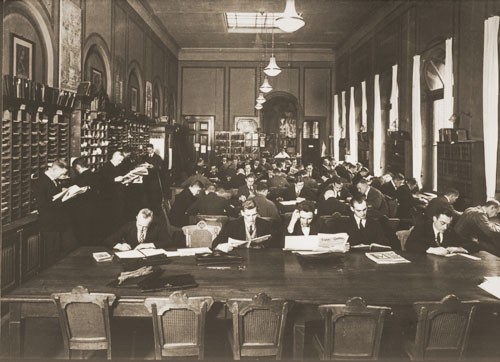


When the First World War broke out, 910 out of 998 students at Hannover Institute of Technology signed up for military service in the first year of the war. Almost a quarter of these were to die in the course of the war. Since several generations of young people were not able to study during this time, soldiers returning from the war crowded into the Institute of Technology after the war was over. Student numbers rose dramatically and peaked in 1921 at 3,000 students. After 1925, student numbers decreased steadily, reaching 1,500 in 1930.
To ease the economic hardship that many students found themselves in after the war, the Hannoversche Hochschulgemeinschaft, Vereinigung von Freunden der Technischen Hochschule e. V. (Friends of Hannover Institute of Technology) was founded in 1921. One year later the Studentenhilfe, today’s Student Services, opened a refectory.
After the First World War, the status of the institutes of technology in state and society and their relationship to universities became one of the central issues of higher education reform in the Weimar Republic. The division of higher education into universities and institutes of technology that had been drawn up in the 19th century was seen as a mistake. The aim of the reform of higher education was to unite the different universities and institutes into one joint institute of higher education, a new universitas.
Here students of the different disciplines were to work alongside and with each other. The sciences and the arts were to complement and stimulate each other.
A step in this direction was to introduce the same organisational structures to the institutes of technology and the universities. For the institutes of technology this meant dissolving the departments that had existed so far and setting up faculties. The following three faculties were introduced on 1st July 1922 at Hannover Institute of Technology:
1. Faculty of General Sciences (including Chemistry)
2. Faculty of Construction (Architecture and Construction)
3. Faculty of Mechanical Engineering (Mechanical Engineering, including Electrical Engineering)
In view of its key role in the reform of the institutes of technology, the Faculty of General Sciences had moved to first place. Further development of General Sciences was not, however, pursued. Professorships were not set up here and lectures were held by Privatdozente (private lecturers).
The aim of the Weimar Reform of Higher Education to create a new universal educational institution including the institutes of technology was not realised until after the end of the Weimar Republic.








